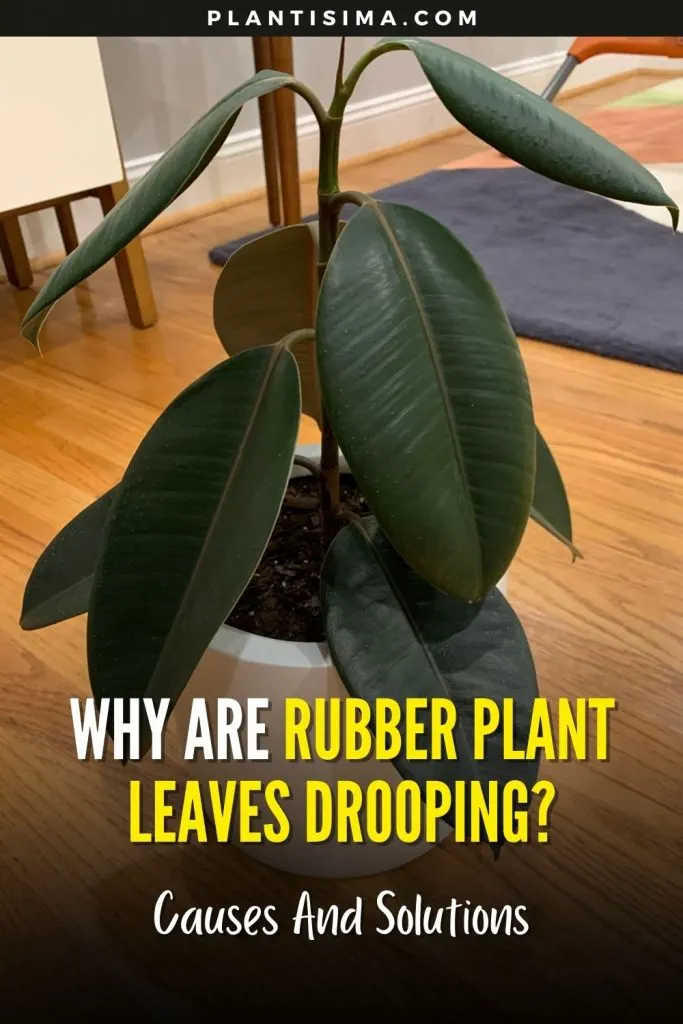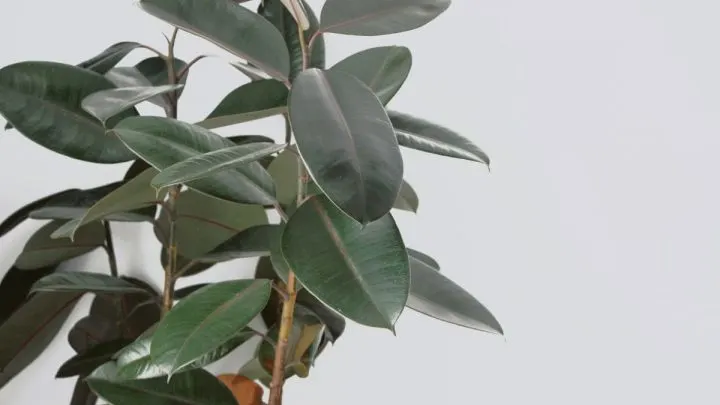In today’s article, we will talk about the rubber plant leaves drooping issue. If you have a rubber plant in your home, often called ficus elastica then you will definitely like this article.
Unfortunately, even though we sometimes do everything to keep our plants at their best, some problems will happen. In today’s article, we will mention as many as 9 of these problems and their causes.
Ficus elastica is a beautiful green plant that makes your home more elegant, beautiful, and airy, and the last thing we want to see is its bent leaves or leaves on the floor because they have completely fallen off.
Let’s learn how to prevent this problem. Make yourself a coffee and we can start learning all about this topic.
Why Are My Rubber Plant Leaves Drooping?
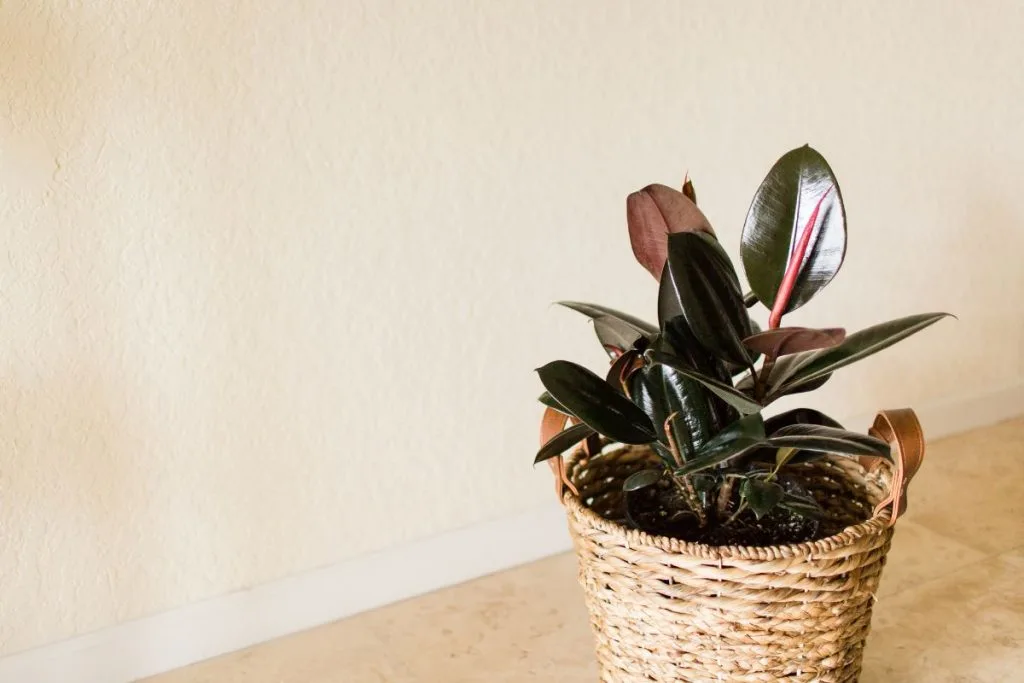
Lack of drainage holes, cold air, spider mites, bright light, indirect light, root system, root rot, then too much light, the list is pretty long.
All of these cause drooping rubber plant leaves, and once their loose leaves are gone, it will be hard getting them back.
When you notice necrotic leaf edges, you see that leaves turn yellow immediately, its foliage growth is sort of slower than usual-react!
Find the cause and solve it as soon as possible. If you want to save your indoor potted plants stay with us because below we bring you simple solutions for this problem.
Can You Repair Rubber Plant Leaves?
The Ficus elastica plant does not have the ability to regenerate/repair leaves that have fallen off.
Those leaves will not return, but new ones will grow in places where they did not grow and where they normally started to grow. Unfortunately, there is no trick that will bring back your lost leaves.
How Do You Fix Droopy Rubber Plant Leaves?
There are many ways to fix droopy leaves. It’s up to you if you’ll search for it right away, or wait until your leaves are fully damaged, and once they are, there’s no turning back from that.
It’s pretty simple to find a solution and cause, but it is more than important to react right away when you notice the problem.
9 Ways To Find Out Why Are My Rubber Plant Leaves Drooping?

Although sometimes it seems difficult and impossible to bring the plant to its perfect appearance, it is possible! If you have recently noticed a problem with your Ficus Elastica, i.e. rubber plant, today we bring you the 9 most common causes of rubber plant drooping.
If you think your plants are facing stunted growth, allow us to help you. Below, we bring you solutions for these problems. With a little attention and effort, your focus Elastica plant will be the good old healthy plant in the corner of the room again!
1. Rubber Plant Drooping Leaves Because Of The Light Problems
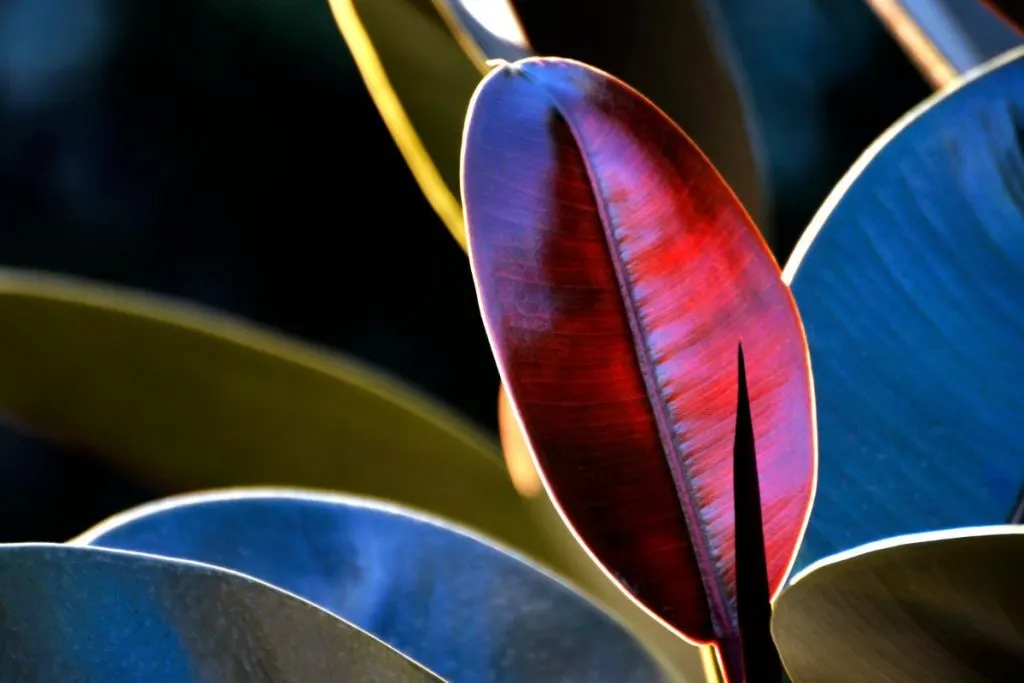
This problem appears in almost all ficus plant types. If you wonder why the answer is very simple.
Ficus plants are one of the indoor trees low light plants and sometimes, their owner can definitely overdo their light needs. These popular house plants are not plants for a dark corner, but the direct sunlight/direct light can easily kill them. Rubber plant’s leaves are very sensitive, remember.
How To Solve Light Change Problem On Rubber Trees?
Ficus is a tropical plant, but indoor plants ficus need less light than the ones that are thriving in their natural habitats.
When this problem appears, yellow leaves will appear and what you need to do is prune your leaves. When pruning, prune your rubber tree plants above the leaf node, not under.
To avoid rubber plant leaves drooping completely, do not change their light positions. If your ficus plant is thriving well on the southwest window, in indirect sunlight conditions, do not move it from there. They prefer low light conditions, so keep it that way.
2. Rubber Plant Drooping Leaves Because Of The Pest Infestation
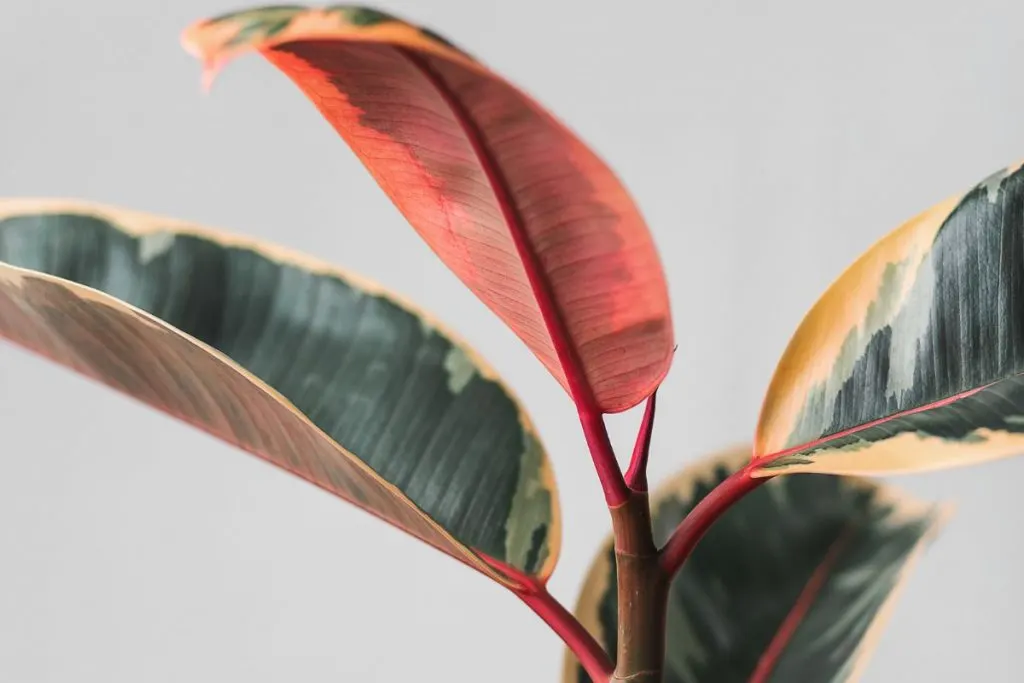
I’m sure we all hate this problem the most. The last thing we want on our plants is a pest infestation. The most common pests are scale bugs, scale insects, and spider mites.
Once they attack your plant, your plant’s healthy leaves are turning yellow, falling leaves arrive after some time and even cramped roots problems can happen.
If you want to see healthy new growth on your plant leaves, there are some simple things you can do.
How To Fix Pest Infestation On Rubber Tree?
In case of yellowing leaves due to pest infestation, you can start with the neem oil product. This is one of the best products for this problem. It will stop/halt leaf loss and your plants will be safe.
It’s best if you use organic neem oil for this issue. Their price is usually between 10$ to 100$, depending on what quality you want.
Another solution is hot pepper spray that’s super cheap and you can buy it at any market. To fully remove pests from your plant pot, you can use a damp cloth too.
Another excellent product for solving this issue is the diatomaceous earth. It doesn’t work as fast as the neem oil does, but it’s another “healthy” way to fix this issue on your rubber plant.
3. Rubber Plant Drooping Leaves Because Of The Humidity
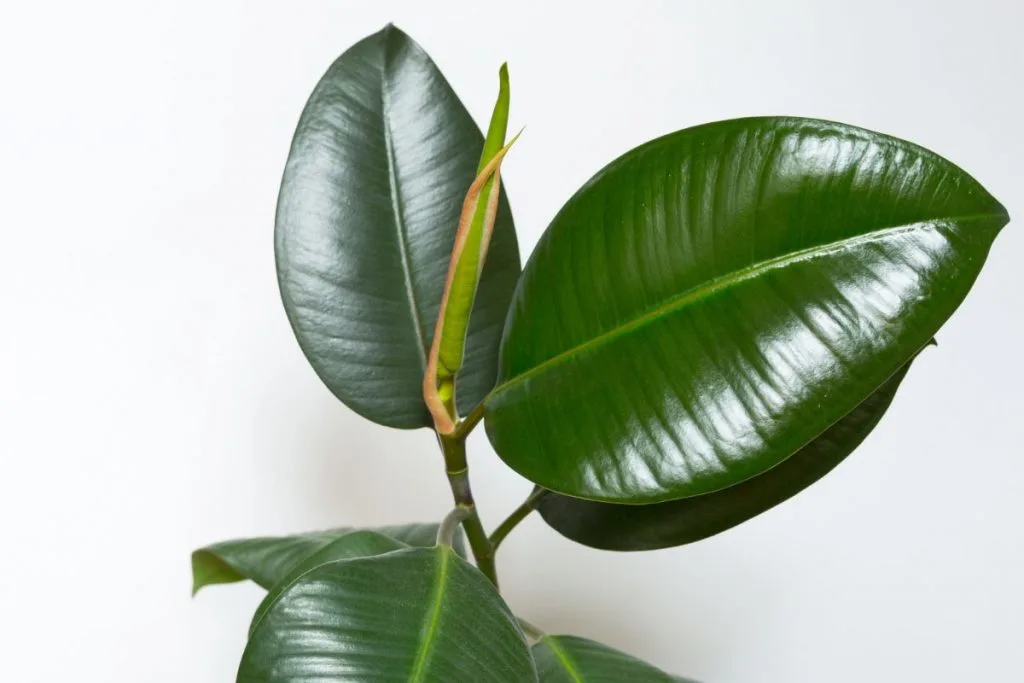
When you have a tropical plant in your home, what you need to know is that they need humidity.
Rubber plant’s environment is very important for their healthy growth. Lack of humidity stops the necessary chemical processes in the leaves and they start to droop.
Most people forget this and their plants start to look droopy, leaves falling problem appears, yellow leaves issues, and so on. If you’re struggling with humidity leaves in your home, there is a simple trick for this problem.
How To Fix Rubber Tree Plant Leaves Falling In Humid Areas?
You don’t need to buy an air humidifier if you lack humidity in your home. For your rubber plants, pebbles filled with water will be more than a good solution to this problem.
That way you’ll achieve more humidity in the area where your plant is and the problem will disappear! Soon enough, your ficus elastic will be that shiny green plant again.
4. Rubber Plant Drooping Leaves Because Of The Over-fertilization
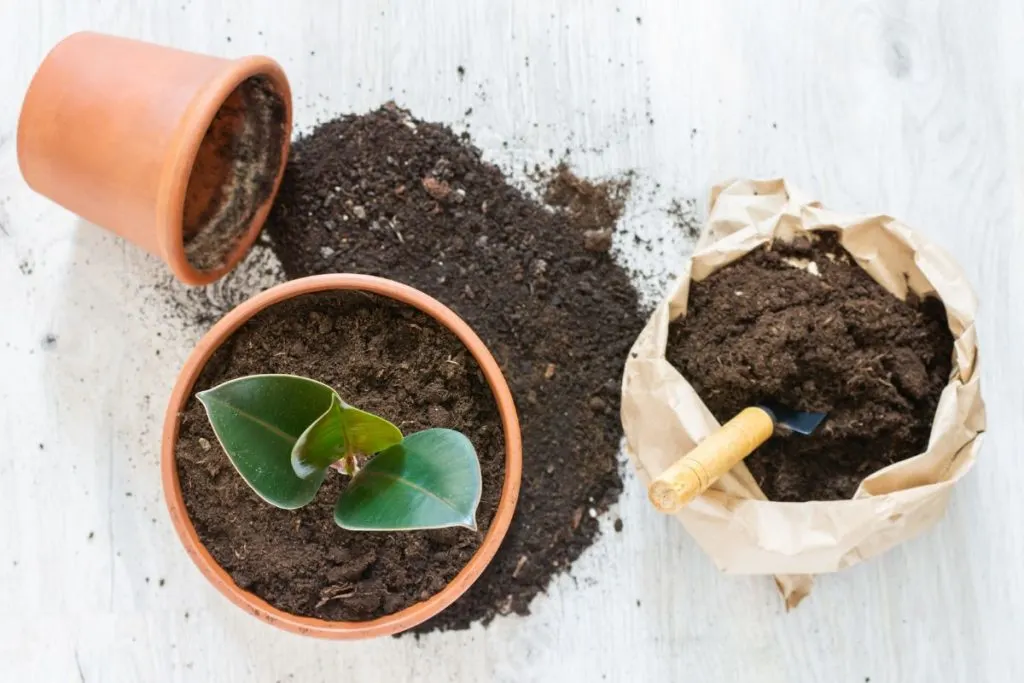
Tropical plants usually rely on excess water, hot air, medium levels of humidity, and bright light when it comes to their thriving process.
They need very little feeding and the last thing you want to do with tropical plants, rubber plants included is over-fertilization, also called fertilizer burn.
I know it’s hard to believe, but when plants absorb nutrients that are too much for them at a particular moment, they can kill them.
It’s okay to fertilize it when you want to achieve a better look and healthier growth, but too much fertilizer can kill your plant. You might spot a bright spot on your plant, and soon enough, leaves start dropping.
How To Fix Over Fertilization Problem On Rubber Plants?
You can try one of the ways how to flush plants without overwatering them. This way, you’ll flush away the excess fertilizer with a slow release of the water and you won’t overwater your plant nor do any further damage to it.
You can try using potash lead as well because thanks to potash lead, it will stop and slow the process of fertilizer released into the soil. When you do this, the plant will keep actively growing and you’ll spot new branches soon.
5. Rubber Plant Drooping Leaves Because Of The Natural Aging

What is inevitable with every plant is the aging of that plant. When the plant enters its last years of life, this will certainly be reflected in its appearance and it will look as if you are not taking care of it too much, even though you have not changed your care guide.
How To Fix Leaf Drop When My Rubber Plant Is Aging?
Unfortunately, it is more than clear that there is no solution to this problem. Although they can live up to 100 years in their natural habitats, it’s not the same as when you grow them at home. Under ideal conditions, they are still not in their natural habitat and will live between 20 and 30 years.
6. Rubber Plant Drooping Leaves Because Of The Dry Air
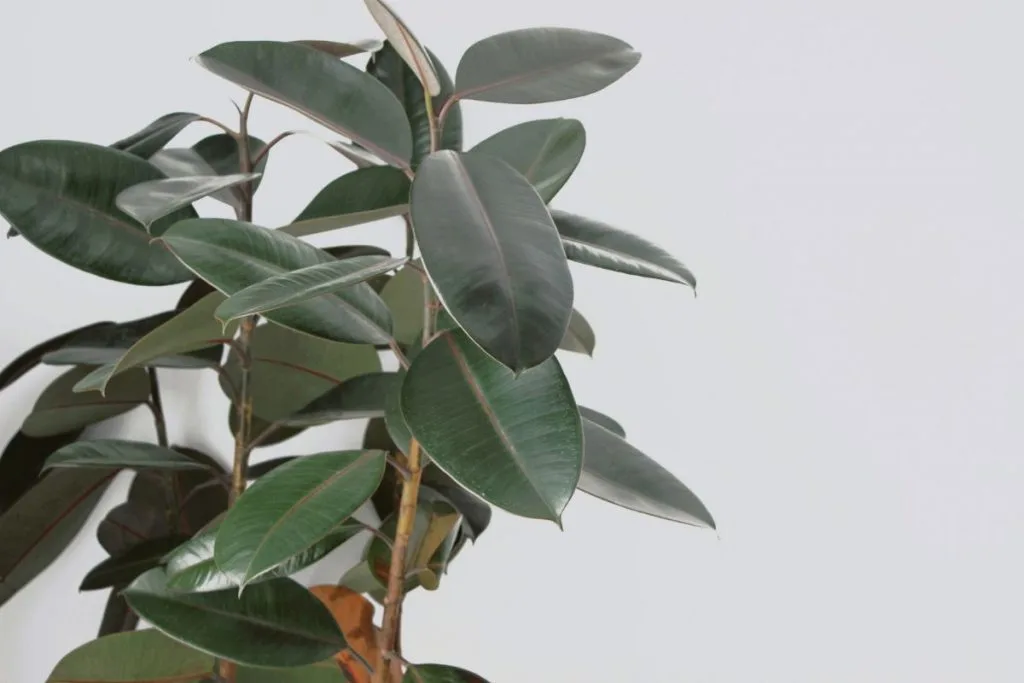
These indoor trees safe for cats don’t like the dry air conditions at all. As we said above, what you need to know when you have a tropical plant is that they need humidity.
Lack of humidity will cause curling leaves issues, and if you don’t stop it right away, falling leaves will occur soon.
How To Fix Leaves Drop In Dry Air Rooms?
You will have to buy an air humidifier if your plant isn’t a bathroom plant. The bathroom is, however, ideal for these plants since they’ll have more than enough humid air in there. Ficus elastic is also one of the best bathroom plants that absorb moisture.
7. Rubber Plant Drooping Leaves Because Of The Too Much Water

What is not good for any plant is too little or too much water. Incorrect watering of your plant will quickly cause problems on it, and brown spots will appear on your plant, yellowing of the leaves as well as dryness of the same and eventual falling of the leaves.
There is an unwritten rule that says that big leaf houseplants prefer medium needs of water, which means watering at least once a week.
Follow your watering schedule and you won’t have issues with the overwatered plant. You can also transplant your plant after this into fresh soil, your regular potting soil.
How To Fix Watering Issue On My Rubber Plant?
A great way that never lies about the presence of water in your plant’s soil is the finger check. Stick your finger into the soil of your plant, the first two or three inches, and see if it is dry or wet.
This way you will know if it is time to water your plant. When the soil is dry, water it, if it is wet, then there is certainly no need for it.
8. Rubber Plant Drooping Leaves Because Of The Fungal Disease
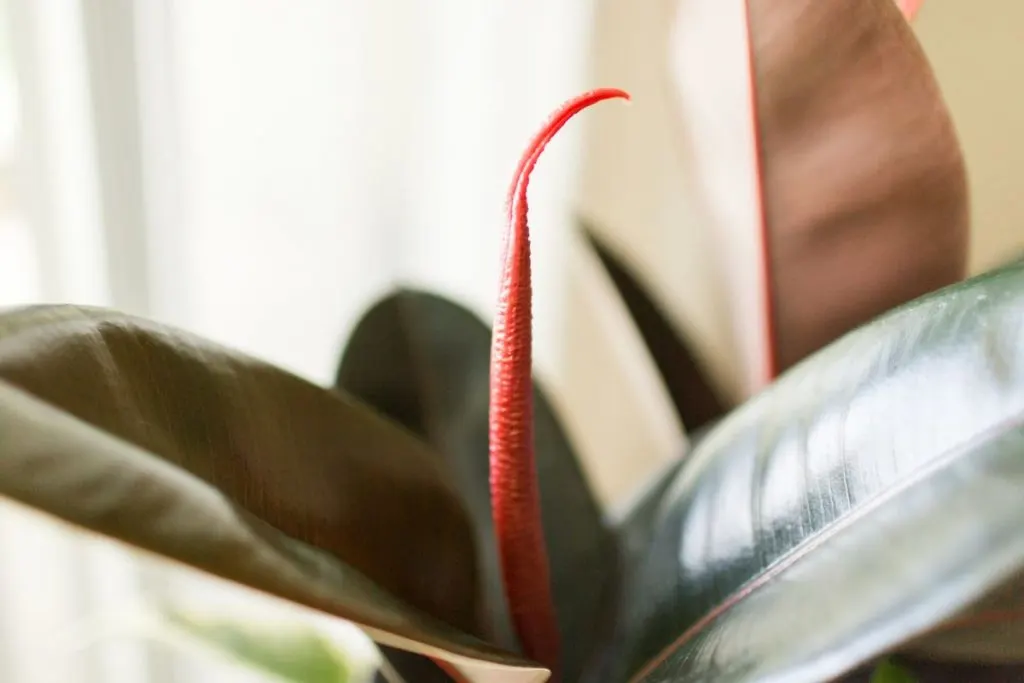
Fungal diseases occur as a result of a sudden change in temperature as well as a consequence of transplanting the plant.
The plants fall into what botanists call transplant shock, and this results in diseases that occur in the roots of the plant and then spread to the entire plant.
How To Fix Droopy Leaves When Fungal Diseases Occur?
Baking soda spray is a quick and easy way to solve this issue since we all have it in our homes already. Make a spray out of the baking soda and a spoonful of water.
You should spray the entire plant with it. Once you do, you should wait for a couple of hours, and you’ll notice a difference even then. In 7 to 10 days, your plant will recover.
9. Rubber Plant Drooping Leaves Because Of The Temperature Drops
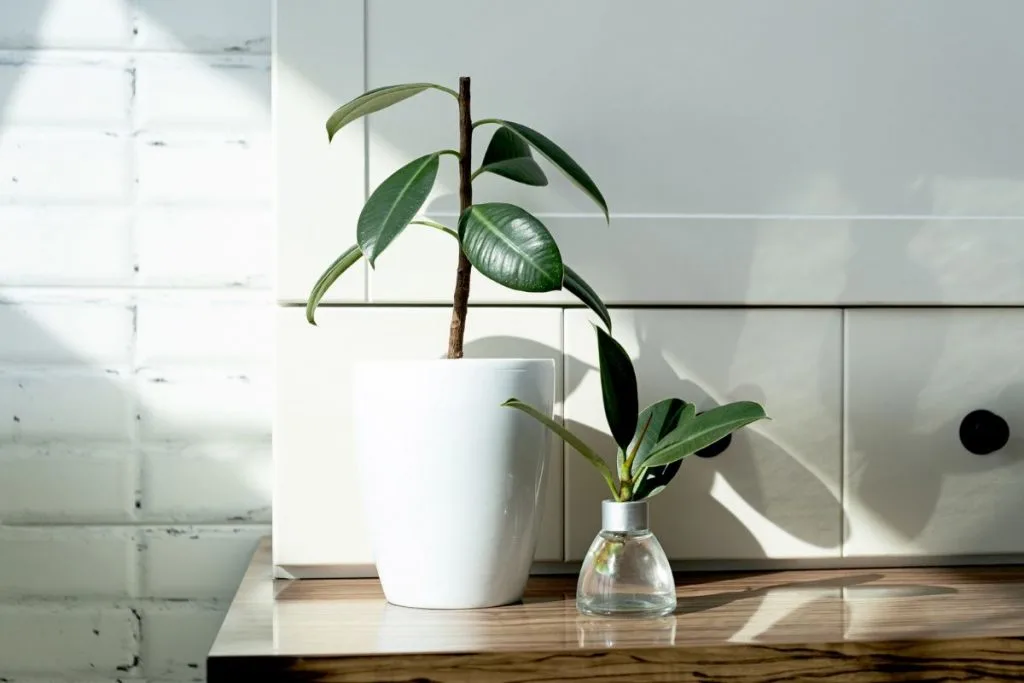
A sudden temperature change is something that does not favor any plant, especially tropical plants that react strongly and quickly to this problem.
If this happens, unknowingly, your plant will immediately send you signs in the form of brown spots on the leaves.
How To Avoid Temperature Drops And Save Your Rubber Plant?
This solution is truly easy and simple: do not move your rubber plant from one room to another.
Room temperature isn’t the same in every room in your home and this can ruin your plant’s leaves really easily. Constant, same, the temperature is the best choice for your rubber plant.
FAQ

In order to make sure that we give our rubber plant proper care, below we will go through a few more questions to perfect today’s topic, i.e. its solutions. If you want to know, even more, stay with us because we will be done soon, and you will know even more at the end.
How Do I Know If My Rubber Plant Is Dying?
The End
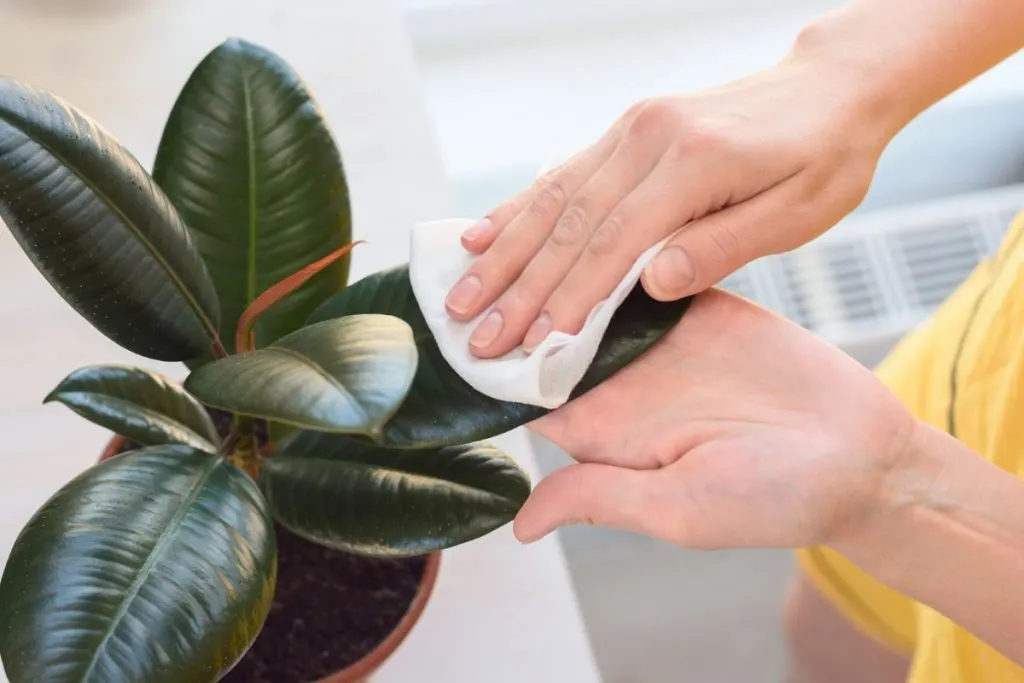
In today’s article, we learned everything you need to know about the rubber plant leaves drooping problem. If your plant is currently going through these problems, I hope this article was a last-minute savior.
Now that you know what the cause is, take a good look at your plant to find out exactly, and then use our advice and save your plant in time.
With your attention and skills, if you do everything as we have advised you, your plant will soon be that beautiful old rubber plant with fat green leaves.
That would be all for today. See you soon with more similar topics.
